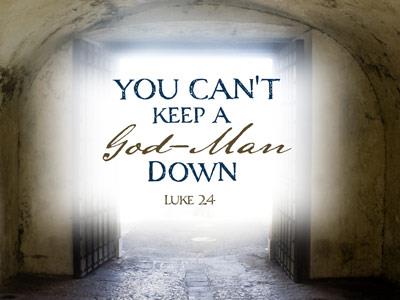-
Why Stand Ye Gazing?
Contributed by Ronald Moore on May 31, 2025 (message contributor)
Summary: Today, on Ascension Sunday, we stand with the disciples, our eyes lifted toward the sky, peering into the clouds where Christ was last seen.
“This same Jesus, who was taken up from you into heaven, shall so come in like manner as ye have seen him go into heaven.” — Acts 1:11b, NKJV
Today, on Ascension Sunday, we stand with the disciples, our eyes lifted toward the sky, peering into the clouds where Christ was last seen. But we do not gaze as those with no direction, no hope, or no purpose. The Feast of the Ascension is more than a historical footnote between Easter and Pentecost—it is a moment of profound theological and practical significance.
The Ascension is the exclamation point at the end of Christ’s earthly ministry. It is the coronation of the risen King, the inauguration of His heavenly priesthood, and the promise of His return. And yet the angels ask the disciples—and us—“Why stand ye gazing?” There is a commission to fulfill, a Spirit to receive, and a world to reach.
Let us examine this moment in three parts:
1. The Completion of Christ’s Earthly Ministry
2. The Continuation of His Work Through the Church
3. The Certainty of His Glorious Return
I. The Completion of Christ’s Earthly Ministry
Luke opens the Book of Acts by summarizing “all that Jesus began both to do and teach” (v.1). Notice the word “began”—because Christ’s work, though complete in one sense, is ongoing in another. His redemptive mission—His incarnation, sinless life, atoning death, and victorious resurrection—is now finished. As He declared from the Cross, “It is finished.” But His work through His Body, the Church, is just beginning.
In His forty days after the resurrection, Christ taught the disciples of “the things pertaining to the kingdom of God” (v.3). He was preparing them not only to be witnesses of what He had done but to be instruments of what He was about to do through them. The Ascension marks the shift from His physical presence among a few to His spiritual presence with all believers through the Holy Spirit.
And what a transition! From the Cross to the Crown. From humiliation to glorification. The Apostle Paul later writes:
“God also has highly exalted Him and given Him the name which is above every name.” — Philippians 2:9
In His Ascension, Jesus takes His rightful throne—not merely as the crucified Savior, but as the enthroned King, the High Priest interceding for us at the right hand of the Father (Hebrews 7:25).
II. The Continuation of His Work Through the Church
Before He ascended, Jesus commanded the disciples to wait in Jerusalem for the Promise of the Father—the Holy Spirit (v.4). This was not an idle pause. It was a necessary equipping. *“Ye shall receive power,”* He said, *“after that the Holy Ghost is come upon you”* (v.8). The Church must never confuse its mission with its own strength. The Great Commission requires divine power.
He gives them (and us) a mission:
“Ye shall be witnesses unto me... unto the uttermost part of the earth.” — Acts 1:8
From Jerusalem to Judea, to Samaria, to the ends of the earth. This is not just a travel itinerary—it is the shape of the Gospel’s expansion. It begins where we are and spreads to where we are not. And it is not merely a task for the first-century apostles; it is the perpetual mission of the Church Catholic.
Let us not miss the pattern:
Christ ascends so the Spirit may descend.
The Spirit fills so the Church may go.
The Church goes so the world may hear.
The angels’ rebuke—“Why stand ye gazing?”—is not a dismissal of wonder. It is a reminder that wonder must lead to witness. Christianity is not a spectator religion. We are not called to be sky-gazers but soul-winners. Not idle observers but faithful ambassadors.
III. The Certainty of His Glorious Return
The Ascension not only closes a chapter; it opens a promise: “This same Jesus... shall so come in like manner”(v.11). The return of Christ is not a myth or metaphor. It is as literal, visible, and glorious as His Ascension. Just as He went up bodily and visibly, He shall return in the clouds with great power and glory.
The Church has always affirmed this truth: “He ascended into heaven, and sitteth on the right hand of God the Father Almighty; from thence He shall come to judge the quick and the dead.” (Apostles’ Creed, 1928 BCP)
Let us live, then, not merely looking back to the Cross or up to the clouds, but forward to His coming. As Paul writes:
“When Christ who is our life appears, then you also will appear with Him in glory.” — Colossians 3:4
This hope should do three things:
1. Purify us – “He who has this hope purifies himself” (1 John 3:3).
2. Motivate us – “Knowing the time… it is high time to awake out of sleep” (Romans 13:11).

 Sermon Central
Sermon Central



